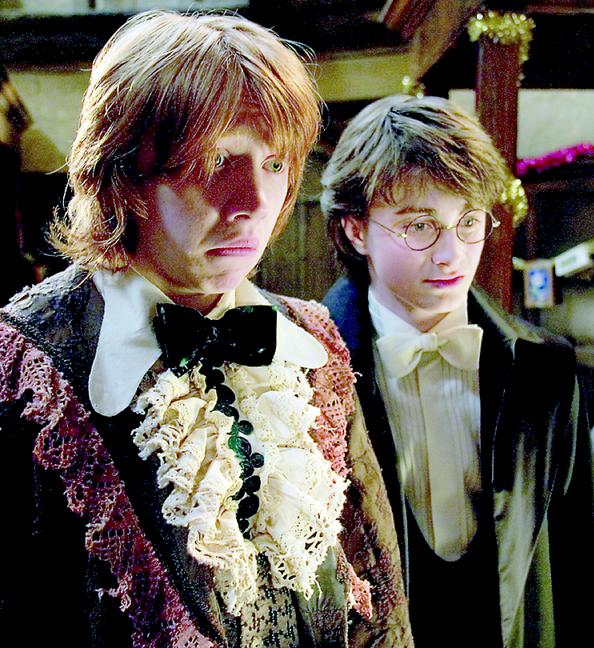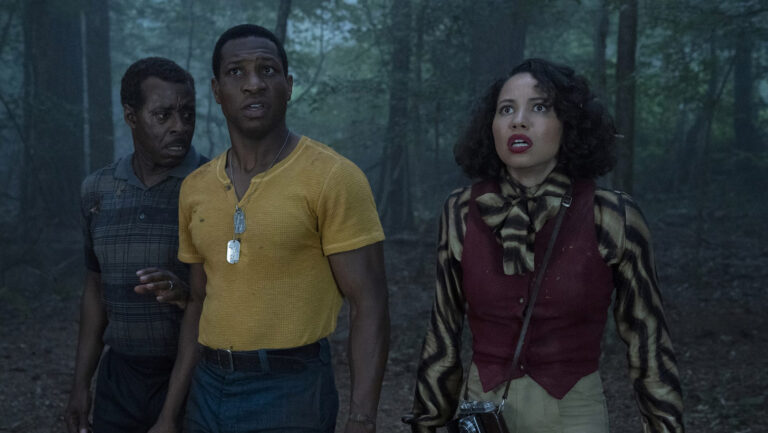Harry Potter and the Goblet of Fire starts out innocently enough with Harry and his friends, the Weasley family, trekking off to the Quidditch World Cup, the Super Bowl of the wizarding world. Unfortunately, the happy times don't last long as the World Cup festivities are interrupted by a legion of Death Eaters, longtime loyalists to He Who Must Not Be Named. Seems that magical villain Lord Voldemort is back, in the flesh, and his emboldened followers are making preparations for is imminent return to power.
Following the terrorist-like attack at the Quiddich World Cup, Harry and his pals, Ron and Hermione, are whisked back to the protection of Hogwarts School of Witchcraft and Wizardry. As it happens, this year Hogwarts will be playing host to the legendary TriWizard tournament. Contestants from two other magical academies will be staying at Hogwarts, competing for the eternal glory of the TriWizard trophy. As fate would have it, Harry finds himself sucked unwillingly into the semester-long competition. As if that weren't pressure enough for a spell-casting teen, Harry must also deal with prophetic dreams about the impending return of Lord Voldemort and–horror of horrors–the onset of puberty.
Harry Potter and the Goblet of Fire is arguably Rowling's most action-packed book. It features multiple magical sequences that are ripe for adaptation onto the big screen. The book is also Rowling's longest, incorporating all sorts of subplots and subterfuge. Expectedly, many of the book's subtleties have been lost in translation. Expelled are many of the characters, including Harry's family and most of the Weasley clan. Gone are Hermione's struggles to liberate Hogwarts' house elves from indentured servitude. Leaner and more streamlined, the film zips along at a breathtaking but never wearying pace.
New series director Mike Newell (director of Four Weddings and a Funeral and Donnie Brasco, and the first Brit to helm a Harry Potter movie) grabs the broom by the handle and lets fly. This is the most visual, most exciting of all the films. Overall, the look is darker and grittier (though not quite as colorlessly gloomy as the last outing). Memorable sequences such as the Quidditch World Cup, Harry's battles with a high-flying dragon and a tense underwater search are brought to life in all their fantastical glory.
There are a few hardcore fans who may grumble at the loss of certain scenes or at the truncation of others. But, in truth, a film should never fully supplant a book. Rowling's original novel stands alone as a classic piece of fantasy literature, while the film version paves its own road, weaving increasingly seamless digital effects and tense pacing into one wondrous fantasy epic.
Goblet of Fire is, somewhat notoriously, the first Harry Potter film to land a PG-13 rating. It is deserved. There are several frightening sequences in the film, and they are rendered seriously enough to inspire nightmares in the lower end of the age spectrum. Also, in keeping with the books' increasingly mature readership, Goblet of Fire features considerably more coming-of-age drama. (There is kissing, pre-teens: You have been warned.) Assorted teenage crushes and the terror of a first school dance provide the film with plenty of juicy, much welcome character development.
The film's young actors, fighting off the effects of puberty as long as possible, continue to grow into their roles. Emma Watson (playing Hermione) and Rupert Grint (playing Ron), in particular, look to have fruitful film careers after the Harry Potter series shuts down. Adding a dash of star power is Ralph Fiennes (The Constant Gardener, Schindler's List), who finally gives flesh to our villainous Voldemort. (I won't spoil the surprise, but I will say he's as creepy as can be.)
Throw all the elements in the magical cauldron, give them a stir, and Harry Potter and the Goblet of Fire emerges as the best of film series. Here's hoping that The Order of the Phoenix, The Half-Blood Prince and … well, whatever's last can keep up the standard.



